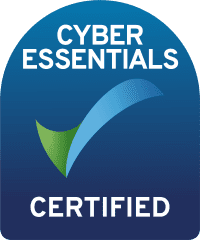If you’re a business owner, the UK Autumn Budget 2024 brings some essential updates that impact payroll, HR, and training costs. This isn’t just another policy update; it’s a chance to understand what these changes mean for your business, your budget, and your day-to-day operations. We’ll go through each update with clear examples and practical steps to help you stay on top of these changes.
For those wanting to get into the detail of the budget, you can download the full budget document here. If you’re looking for a straightforward breakdown, let’s dive in.
Summary Table: Key Autumn Budget 2024 Changes for Employers
| Change | Details | Impact |
|---|---|---|
| NIC Rate Increase | Employer NIC rises from 13.8% to 15% from April 2025 | Higher payroll costs for businesses |
| Secondary Threshold Reduction | NIC threshold lowered from £9,100 to £5,000 | Increased NIC for lower-wage earners |
| Employment Allowance Increase | Raised from £5,000 to £10,500 from April 2025 | Higher NIC relief, expanded eligibility |
| Growth and Skills Levy | Replaces apprenticeship levy, supporting short-term training | Greater flexibility in employee training |
| Digital Payroll Reporting for BIKs | Mandatory digital reporting for benefits in kind from April 2026 | Simplified compliance for payroll |
1. Employer National Insurance Contributions (NIC)
The Autumn Budget 2024 bring changes to employers national insurance. Starting in April 2025, employer NIC rates will rise from 13.8% to 15%, and the earnings threshold at which employers start paying NIC will drop from £9,100 to £5,000. Here’s what this could mean for your payroll costs.
Example: NIC Costs in Action
Imagine you have 10 employees each earning £25,000 per year.
- Current NIC Cost (13.8% rate with £9,100 threshold):
- NIC per employee: (£25,000−£9,100)×13.8% = £2,194
- Current Total NIC cost for 10 employees: £21,940.
- NIC Costs from April 2025 (15% rate with £5,000 threshold):
- NIC per employee: (£25,000−£5,000)×15% = £3,000
- Total NIC for 10 employees: £30,000.
In this example, you’d be looking at an extra £8,060 annually in NIC costs or £671.67 per month.
What to Do Next:
- Adjust Your Budget Early: Start budgeting now to accommodate this increase in payroll costs.
- Consider Salary Adjustments for Lower-Wage Roles: For employees near the new £5,000 threshold, even small adjustments in pay may affect your NIC obligations.
👉 NIC Calculator: To get a more accurate estimate of the national insurance costs for your business, use the NICs Calculator on GOV.UK.
2. Employment Allowance Increase:
The Employment Allowance will more than double from £5,000 to £10,500 starting in April 2025, providing more national insurance relief for eligible businesses. Additionally, the cap limiting eligibility to businesses with NIC bills under £100,000 has been removed, meaning more businesses can benefit.
Example: Potential NIC Savings
Let’s use our example business with 10 employees, each earning £25,000.
- Current NIC Bill Without Allowance:
Total NIC = £21,940. - NIC Bill with Current £5,000 Allowance:
Adjusted NIC = £16,940. - NIC Bill with New £10,500 Allowance:
Adjusted NIC = £11,440.
Total Additional Savings: This new allowance provides £5,500 more in NIC savings.
Practical Steps:
- Reinvest Savings: Consider using NIC savings to improve employee benefits or invest in training that boosts productivity.
- Plan for Financial Flexibility: These savings can help offset the upcoming NIC rate increase and should be factored into your financial forecasts.
3. Growth and Skills Levy: Flexible Training for Your Employees

Replacing the traditional apprenticeship levy, the Growth and Skills Levy offers more flexibility for short-term, skill-specific training. This is ideal for businesses with seasonal staff or specific skill gaps without a long-term commitment.
Example of Using the Levy
Imagine you run a retail business and need seasonal staff trained in customer service for the peak holiday period. With the Growth and Skills Levy, you could fund a 6-month training program to quickly get your team up to speed with skills most valuable during your busiest time of year.
What You Can Do:
- Identify Key Skill Gaps: Focus on areas where short-term training could have an immediate impact, such as customer service or sales skills.
- Partner with Local Training Providers: Many providers are ready for this levy change and offer programs that align with your team’s skill needs.
4. Mandatory Digital Payroll Reporting for Benefits in Kind (BIKs)
Starting in April 2026, the budget mandates digital reporting for benefits in kind (BIKs), such as company cars or private healthcare, through payroll software. This aims to make compliance easier and reporting more accurate.
What Does This Mean for You? If you currently track benefits manually, this update will require digital reporting. Businesses offering even a few benefits in kind will need payroll software capable of handling digital reporting for income tax and Class 1A NICs.
What Does This Mean for Your Employees? If you currently track benefits manually and report annually, your employees will receive a tax code change or a bill from HMRC. With the changes, your employees will have the tax value of the benefit in kind taken from their pay each time they are paid. This aims to smooth out the amount of tax paid over the year as opposed to annually at the end of the tax year.
Practical Steps:
- Upgrade Your Payroll Software: Make sure your payroll system can support digital BIK reporting. Most providers are preparing for this change, but it’s best to check early.
- Simplify Benefits: If certain benefits are too complex or costly to report, consider streamlining or standardizing them to keep reporting straightforward.
FAQs
Q: How much extra should I expect to pay in NIC with the new rates?
The NIC rate increase and lower threshold will raise costs. For a business with 10 employees earning £25,000 each, the added expense would be around £8,060 annually.
Q: How can I make the most of the new Employment Allowance?
With the allowance now at £10,500, businesses can benefit from significant NIC savings. These savings can be reinvested in areas like training, equipment, or employee benefits to help grow your business.
Q: Where can I calculate National Minimum Wage obligations?
To ensure compliance with updated wage rates, use the National Minimum Wage Calculator on GOV.UK. It’s a helpful tool for checking wage compliance.
Final Thoughts: Staying Ahead of the Budget Changes
The Autumn Budget 2024 brings increased costs, challenges and opportunities. With careful planning, you can handle increased costs while taking advantage of new allowances and flexible training options.
If you’re looking for help managing these updates, from payroll adjustments to compliance, reach out to Crystal HR & Payroll Ltd. We’re here to support your business, so you can focus on growth and keep your team running smoothly.
If you've found this article useful, why not check out some of our other articles:





